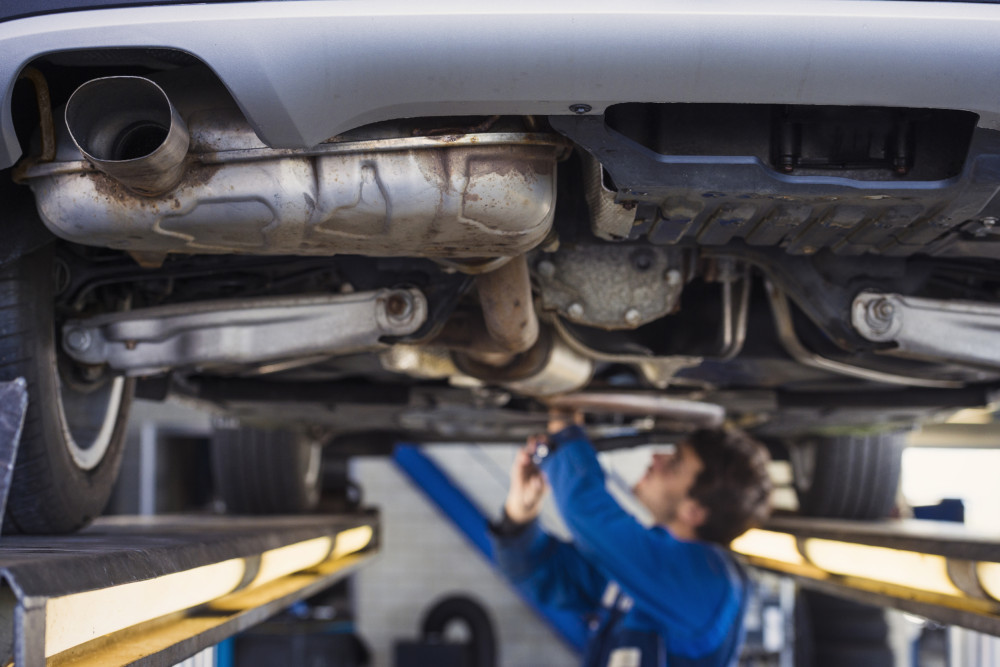
Whether you have to retake the state’s emissions test or you’re dealing with a clanking, rumbling muffler, here’s what you should know.
How the Exhaust System Works
The exhaust system extends the full length of your car, from the engine back to the muffler. In the process, gases move through the system, where they’re collected and analyzed by the oxygen sensors and refined by the catalytic converter, which cuts down on the toxic pollutants released into the air. The exhaust passes through the system via the tailpipe, while the muffler softens any sounds to ensure your car runs cleaner, smoother and quieter.
Your exhaust system is not its own separate entity. Rather, it’s part of your car’s internal combustion process, which generates power for the vehicle to operate. Within this process, fuel from the gas tank flows into the combustion chamber, where it mixes with outside air. Meanwhile, a spark plug ignites this combination, resulting in a small but crucial explosion that powers the piston. Then, the piston transfers that force to the crankshaft, which travels to the transmission and eventually to the wheels. What’s left over from the fuel-air mixture leaves through the exhaust port.
Using a series of planes featuring platinum, rhodium or palladium, the catalytic converter is essential in this process, reducing the severity of nitrogen oxide, carbon monoxide and hydrocarbon present in the the exhaust.
Exhaust System Issues
How do you know your exhaust system is experiencing an issue?
- You hear a strange notice – buzzing or rumbling – usually coming from your muffler.
- You get drowsy when driving, even when you’ve had enough sleep.
- A dashboard warning light comes on.
- Your car hesitates or makes a chugging sound when you start it up.
- Your car rattles even when it’s not moving.
- You experience decreased fuel efficiency.
If you notice any of these signs, your exhaust system might have:
- An exhaust leak, often indicated by a vibrating seat, steering wheel or pedals or loss of power as you operate your car. Once there’s a leak in the exhaust system, the engine has to work harder, causing parts of the car to vibrate.
- A leak or hole diverting carbon monoxide into your vehicle’s cabin. Often, this issue goes back to a stuck valve, loose bracket, a pinhole or problems with the catalytic converter.
- Worn out, broken or damaged components, which often correlate with higher mileage. In the process, you hear the vibrations or experience decreased fuel performance.
Whether you notice strange noises or have emissions issues, something’s not quite right with the exhaust system. Bring your car to DaSilva’s for diagnosis and repairs!





